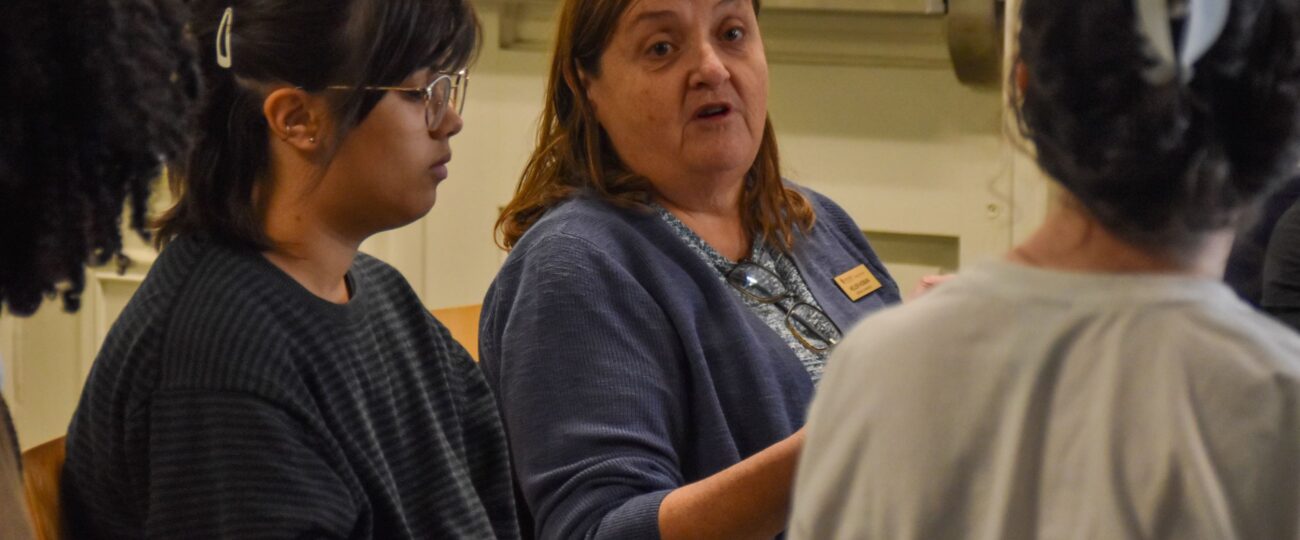Participants noted smaller portion sizes, a lack of vegetarian and vegan options, and restrictive hours of operation, among other concerns, stating that they “don’t trust” the quality of their food.
The first Culinary Council meeting of the 2022-23 academic year took place in the lobby of Lee Wicker Hall at 6:00 p.m. on Sep. 29. Dining Services staff were in attendance alongside several students to discuss their thoughts following the rebranding efforts that started off the fall.
General Manager Helen Hoban says that an Eagle Meal is meant to be the equivalent of a meal swipe in Eagle Eatery, which is why they always come with an entree, starch and dessert. However, some attendees stated that the fruit and vegetable items are limited, especially those that do not require Cafe Cash.
Possible solutions for this included a potential Fresh Vibes takeover in the Flipp It kitchen, for which they would incorporate menu items from the owner’s sister location on 1675 Ebenezer Rd. in two week increments.
Another suggestion was to install Simply-to-Go kiosks at strategic points across campus, namely in Dinkins Hall where the Subway was located before it was closed in the summer of 2021.
Subway will not be reinstalled due to financial constraints. Hoban says that because national brands require equipment updates roughly every 7 years, doing a complete refurbishment would cost around half a million dollars.
“We would much rather put that money on your plates” Hoban says.
Hoban and fellow Sodexo team members expressed reservations that allergy-inclusive meals would be “cost prohibitive” because of rising product expenses and supply-chain issues.
Suppliers are also the catalyst behind inconsistent portion sizes, which students have pointed out at The Crust and Mein Bowl.
According to Markley’s and Concessions Retail Manager O’Bryan Warren, the noodles and rice at Mein Bowl are sides, and as such, are supposed to be 6 ounce portions. The chicken is supposed to be a 3 ounce portion.
However, further training is on the agenda to ensure that employees are dishing out equal and accurate amounts of food.
He also added that the size of pizzas at The Crust has fluctuated between 6” and 10” inches depending on what the supplier has available. Regardless of size, the pizza is still considered an entree for an Eagle Meal, with a side salad or bag of chips to go with it.
Sensitivity training will also be put on the calendar to guide cashiers through transactions where the student cannot afford their meal.
Operations Manager Lawanda Hutchinson says that when this happens, employees fill out a form to send to Financial Services where the leftover charge is written off as lost revenue. It is not policy for cashiers to flag down consumers for unsuccessful transactions.
This is part of the University’s efforts to combat food insecurity, and to avoid embarrassing students for their financial need.
Eagle Eatery is an alternative for students with specific dietary needs. The Simple Servings station in particular caters to individuals with restrictions on gluten, dairy, and more. Still, Hoban and Executive Chef Iesha Hollis have been receiving occasional complaints about stomach pain from diners.
Sophomore individualized studies major Arden Zayas told staff that she feels uneasy dining on campus because she is unsure about the quality of ingredients and how they will energize her throughout the day.
“I have to think about what I can actually afford, so using Eagle Meals is the way that I eat everyday, but I often don’t eat because I can’t stomach fried foods or just a lot of things. I wish I could just tough it out, but I need to be careful. It’s really hard for me to walk all the way (to Eagle Eatery) and make it to all my classes on time. I feel like Markley’s is the most convenient, usually, but sometimes I can’t afford it or don’t want it.”
They encourage students to come to them as soon as they encounter a problem. They are willing to cook an individual meal that the consumer feels comfortable eating.
Hours of operation at both Markley’s Food Court and the Eagle Eatery are influenced by staffing shortages and goals to minimize food waste.
Dining Services says they recognize room for improvement and want to hear from students as much as possible.
“I am information sharing. Please don’t take these as excuses because it’s not what it’s intended as. They are just intended to give you transparency and the facts of the situation because you deserve that,” Hoban told attendees at the meeting.
Feedback regarding sickness or other critiques can be directed to the survey that is attached to a number of flyers posted around the dining hall. Hoban can be reached via email at Helen.Hoban@Sodexo.com.




